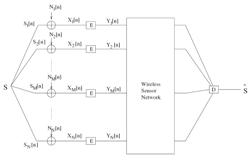Spatio-temporal Characteristics of Point and Field Sources in Wireless Sensor Networks,
M. C. Vuran and O. B. Akan, in Proc. IEEE ICC '06, Istanbul, Turkey, June 2006.
 
|

|
Abstract:
Wireless Sensor Networks (WSN) are comprised of densely deployed
sensor nodes collaboratively observing and communicating extracted
information about a physical phenomenon. Dense deployment of sensor
nodes makes the sensor observations highly correlated in the space
domain. In addition, consecutive samples obtained by a sensor node
are also temporally correlated for the applications involving the
observation of the variation of a physical phenomenon. Based on the
physical characteristics and dispersion pattern over the area, the
phenomenon to be observed can be modeled as point source or field
source. Clearly, understanding the spatio-temporal correlation
characteristics of the point and field sources brings potential
advantages to be exploited in the design of efficient communication
protocols. In this paper, a theoretical analysis of spatio-temporal
correlation in WSN is carried out. The objective of this analysis is
to capture the spatio-temporal characteristics of point and field
sources in WSN. First, the model for point and field sources are
developed and their spatio-temporal characteristics are analytically
derived along with the distortion functions. Based on the
theoretical analysis, numerical simulations are performed. This
analytical work provides tools for finding the feasible operating
region in terms of spatial and temporal resolution for a specific
distortion constraint considering spatio-temporal correlation,
signal properties, and network variables in WSN.
|

